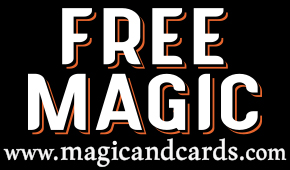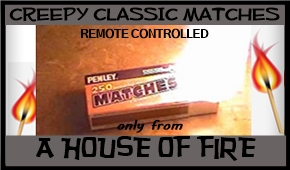Tax Tips For the Part-time Performer
Category: Blog Posted by: C. DENNIS SCHICK
Tax tips for the Part-time performer
by Dane Dover, CPA
EDITOR’S NOTE: This article was written by a CPA, who also is a magician, for the vast majority of magicians who are part-time performers, and who do their own taxes.
The first thing the part-time performer should do is establish a profit motive. The profit motive is what the IRS uses to determine if a particular activity is a business or a hobby. A profit motive exists if you do the things a normal business would do. For instance do you have a Website, business cards, business phone, and a business checking account? While all of these are not necessary, they help establish that you have a legitimate business and not just a hobby. (Even if it is a hobby and you can’t take a loss, you can still deduct expenses to offset income to zero. If for example you do a couple of shows a year and make a few hundred dollars you still would not have to show this as income if you had enough expenses to offset this.)
The IRS uses the three-out-of-five rule to help establish profit motive as well. In other words, a legitimate business would not stay in business to lose money. If you can show a profit three out of five years, then the IRS will most likely believe that a legitimate business exists. Almost every business starts out losing money or breaking even. Some businesses have long profit cycles when they would lose money one year and make money the next two, and lose again the following year. It would be unusual, however, for Magic to follow this cycle. Also the three out of five rule needs to be reasonable. In other words, you can’t make one hundred dollars for three years and then lose one thousand the next two.
Okay, so I’ve established a business and not just a hobby. Now what expenses can I deduct against my business income? The short answer is all business expenses related to operating the business. I am going to focus on three of the major expenses magicians would deduct on their income tax returns.
The first expense would be automobile expense. While most part-time performers will use the mileage method, actual costs could also be used. Under the mileage method you are allowed to deduct 56 cents per mile driven in 2014. For 2015 those rates go to 57.5 cents per mile. Remember these are all miles driven in the production of income and would include miles driven to and from performances, magic conventions, magic club meetings, the post office to mail advertising pieces, the office supply store to purchase office supplies, and the grocery store to purchase lemons (if you don’t know why a magician would be purchasing lemons then ask one what a magician would do with a dollar bill and a lemon). In addition to using the mileage rate you can deduct above and beyond the mileage rate the costs for parking, fees, tolls, etc.
The second expense would be magic conventions and travel. The cost of conventions would be deductible because they help you learn more about your trade or business. Deductible travel expense includes the cost to get to and from the location where the convention is held. Travel would either be mileage (see above) or the cost of airfare. Deductible hotel expense is necessary because you need to rest while away from your tax home. Meals are deductible using actual costs as long as they are not lavish or extravagant. The IRS has been vague on what is considered lavish or extravagant, but for most part-time performers this is not going to be an issue. The other method of deducting meals is using the IRS standard meal allowance tables which give you a meal allowance of between forty-six to seventy-one dollars per day, based on location. These meals are deductible at fifty percent of either the actual rates or the meal allowance.
The third expense would be magic equipment. Most part-time performers would deduct the cost of equipment (including props) as it is purchased (low cost and changed frequently). It is possible that a major illusion purchase would need to be depreciated over a five year time frame (unless accelerated depreciation is allowed). For accelerated depreciation to be allowed, the amount of the depreciation cannot exceed the amount of the taxable income of the business or $500,000 for all accelerated depreciation taken for the taxpayer. In other words, if the part-time performer operated another business that took accelerated depreciation of $499,000, then the part-time performer could only take $1,000 of accelerated depreciation.
Of course this advice is not meant to replace your own accountant, but is meant to be a guide for you who do your own taxes.
Dane Dover is a CPA in the Fort Smith, Arkansas area who is also a part-time performer. If you have any comments or questions about this article you may email him at dane.dover@cpa.com or visit his website www.magiciancpa.com













